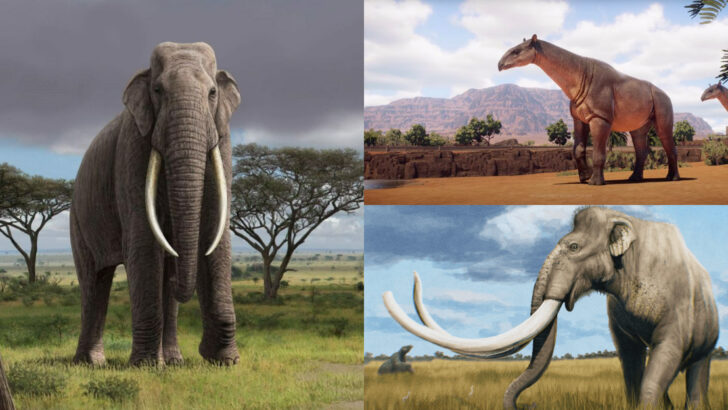The history of our planet is marked by the fascinating and diverse lives of creatures that once roamed its lands, leaving behind intriguing stories and mysteries. Among these are the lost species of elephants—giants that were not only larger but often stranger than the elephants we know today.
These ancient pachyderms varied in size, shape, and habitat, adapting in remarkable ways to their environments. Here, we explore 24 such species, each unique in its own right, offering glimpses into a world where these larger-than-life creatures thrived.
Palaeoloxodon namadicus
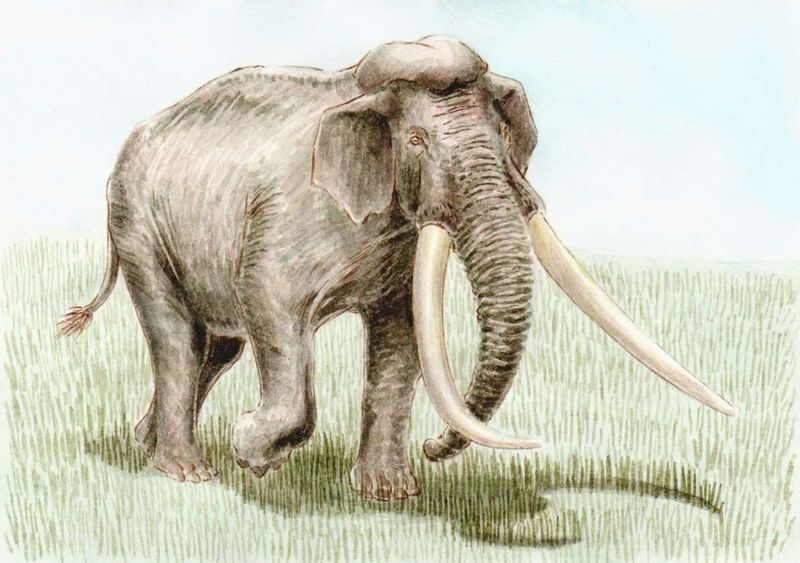
Imagine an elephant so large, it dwarfed its modern relatives. This was Palaeoloxodon namadicus, possibly the largest land mammal ever.
Its remarkable straight tusks could stretch up to four meters. Living during the Pleistocene epoch, this behemoth roamed the grasslands of Asia.
Its sheer size likely made it a formidable presence, deterring predators and competing herbivores alike. Discoveries of its fossils have often led to debates among paleontologists about its exact size and weight, adding intrigue to its story.
This ancient giant reminds us of a time when nature’s grandeur knew no bounds.
Mammuthus trogontherii
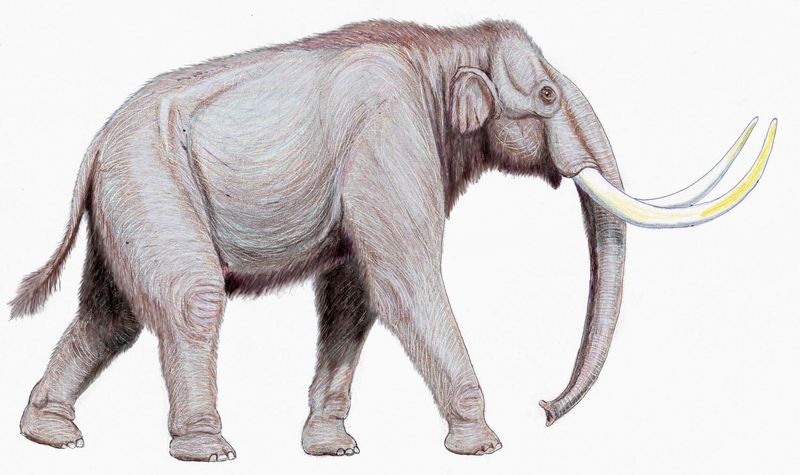
In the frigid expanses of the Ice Age, Mammuthus trogontherii, the Steppe Mammoth, roamed. Known for its impressive stature, it stood taller than today’s elephants, with long, spiraled tusks.
This mammoth adapted well to cold environments, sporting a dense coat of insulating fur. Its diet mainly consisted of grasses and shrubs found in the vast, open steppes.
Fossil evidence suggests it might have been a direct ancestor to the woolly mammoth. Its survival strategies during harsh climates provide insights into the resilience and adaptability of ancient megafauna.
Deinotherium giganteum
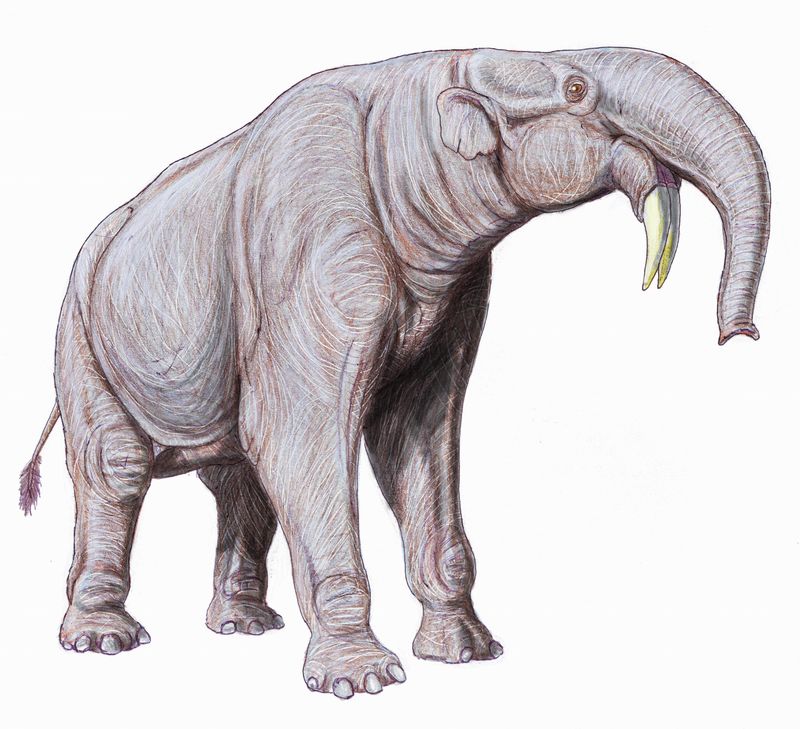
Deinotherium giganteum, a true giant of the Miocene, was unlike any elephant today. Its unique, downward-curving tusks set it apart.
These tusks likely aided in stripping bark or digging up roots. Found across Europe, Africa, and Asia, it thrived in forested environments.
Its massive body and long legs suggest it was well adapted to traverse diverse terrains. Unlike other elephants, it sported a shorter trunk.
Fossils have sparked debates about its exact appearance and behavior, adding to its mystique. This creature’s existence hints at evolutionary paths not taken by modern elephants.
Gomphotherium productum
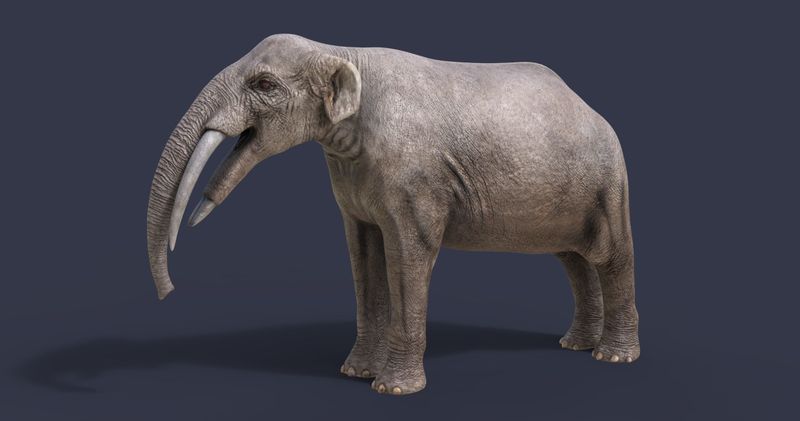
Gomphotherium productum was a prehistoric elephant that lived during the Miocene to Pliocene epochs. Recognizable by its four-tusked appearance, with two in the upper jaw and two resembling shovels in the lower, it was a versatile grazer.
This creature frequented areas near water sources, using its unique tusks to dig for aquatic plants. Its adaptive feeding habits allowed it to thrive in both forested and open areas.
Found across multiple continents, its wide distribution speaks to its successful adaptation strategies. This species showcases the incredible diversity among ancient elephants.
Stegodon aurorae
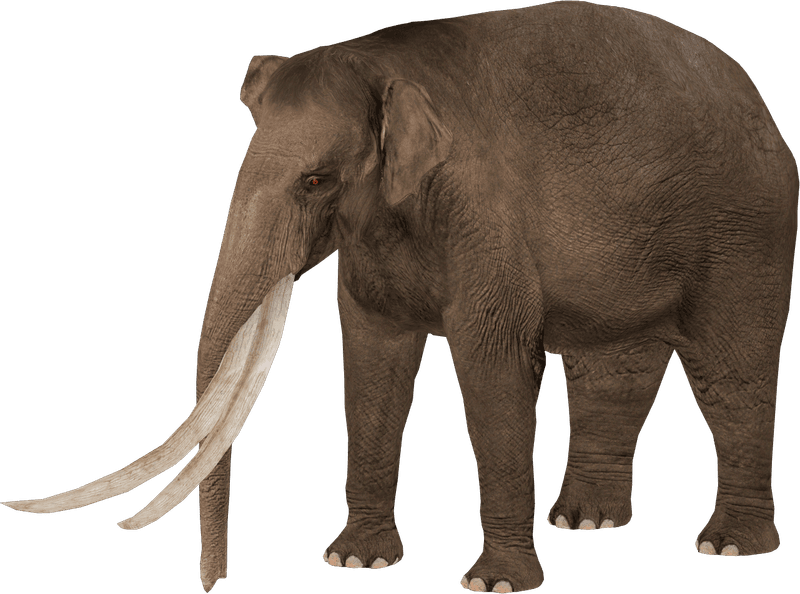
Stegodon aurorae, a fascinating member of the ancient elephant family, is known for its distinctively ridged molars. These teeth were perfectly suited for grinding down tough plant material found in the dense forests of Southeast Asia.
Living during the Pliocene to Pleistocene epochs, it shared its habitat with a host of other megafauna. Its massive frame and tusks were characteristic of its kind, yet it maintained a unique elegance.
This species provides valuable insights into the evolutionary adaptations that allowed elephants to diversify and thrive in varied ecological niches.
Elephas recki
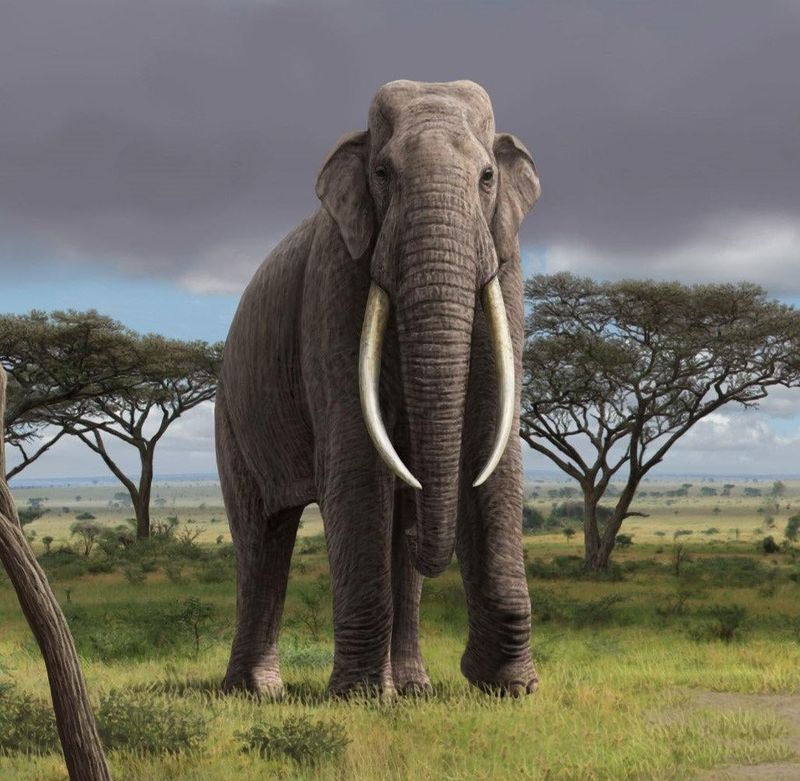
Elephas recki, an ancestor of modern African elephants, roamed the savannahs of prehistoric Africa. With its long, slightly curved tusks and towering stature, it commanded the landscape.
This species lived during the Pliocene to Pleistocene epochs, adapting well to the grasslands and woodlands. Its diet included a variety of vegetation, from grasses to shrubs.
Fossil records suggest it migrated across vast distances, akin to modern elephants’ migratory patterns. Such behavior highlights the deep-rooted lineage of elephants and their enduring connection to the African landscapes they have long inhabited.
Paraceratherium
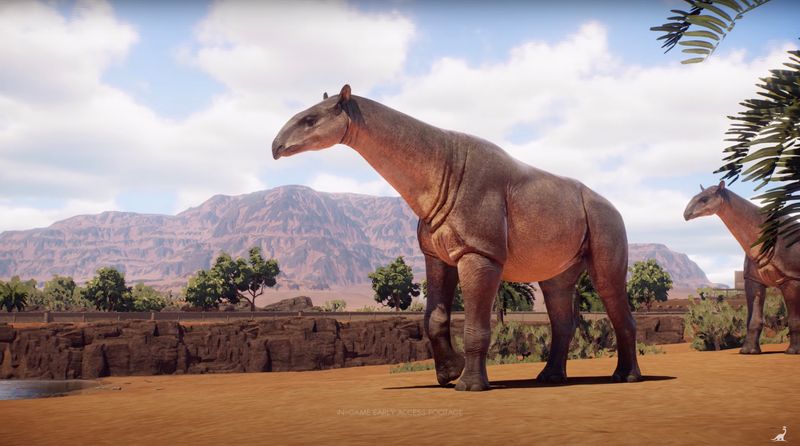
Although not an elephant, Paraceratherium deserves mention for its size. This hornless rhino, often compared to elephants, was one of the largest land mammals ever.
Its long neck and massive limbs allowed it to browse treetops, akin to a giraffe. It lived during the Eocene epoch, inhabiting regions of Asia.
Despite its size, Paraceratherium was likely a gentle giant, feeding primarily on leaves and soft vegetation. Its impressive stature has intrigued paleontologists and remains a symbol of prehistoric gigantism.
This creature’s existence underscores the diverse evolutionary paths of large herbivores.
Mammuthus columbi
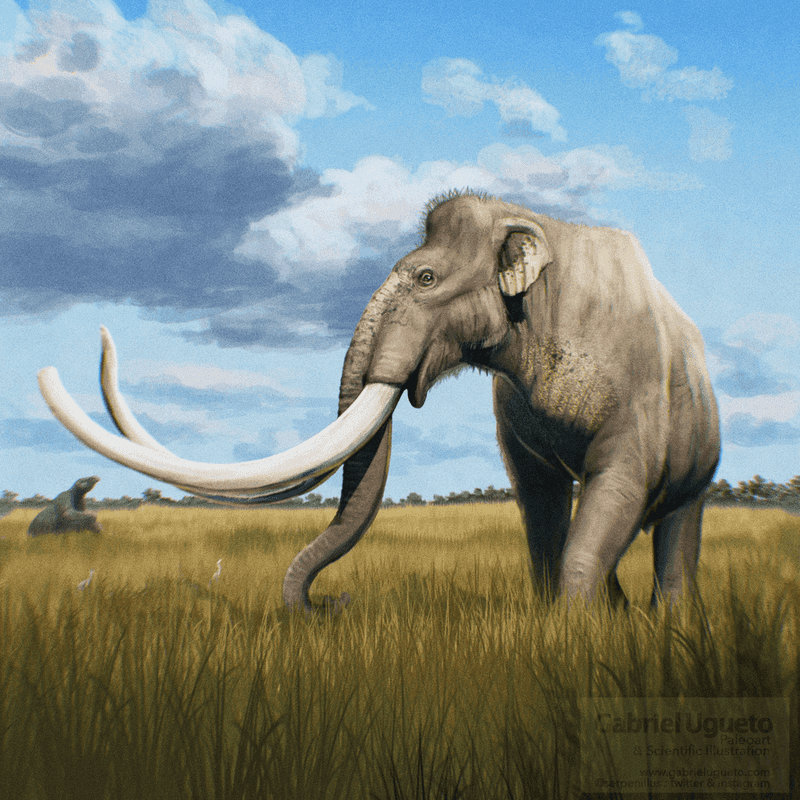
Mammuthus columbi, known as the Columbian Mammoth, was a giant of the North American plains. It roamed from the southern United States to Central America during the Pleistocene epoch.
This mammoth had a slightly domed head and long, curved tusks. Its thick fur coat was less dense compared to its woolly cousin, suitable for its relatively warmer habitats.
It thrived in a variety of ecosystems, from open grasslands to forests. The Columbian Mammoth’s remains have been found alongside early human artifacts, suggesting interactions that have sparked much curiosity and research.
Mammut americanum
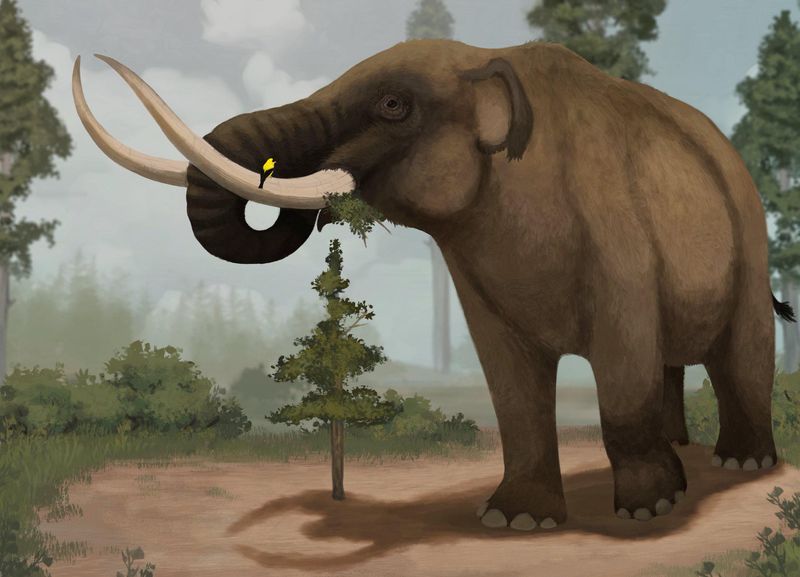
Mammut americanum, the American Mastodon, was a robust creature of the prehistoric North American woodlands. Its shorter, straighter tusks distinguished it from the mammoths.
This mastodon’s body was covered in a thick, shaggy coat, ideal for cold climates. Its diet consisted mainly of twigs, leaves, and swamp vegetation.
Unlike its mammoth contemporaries, it preferred forested and swampy areas. Fossil evidence suggests mastodons were preyed upon by early human hunters, adding a layer of historical interaction.
Their extinction marks a significant chapter in the dynamic history of megafauna in North America.
Loxodonta adaurora
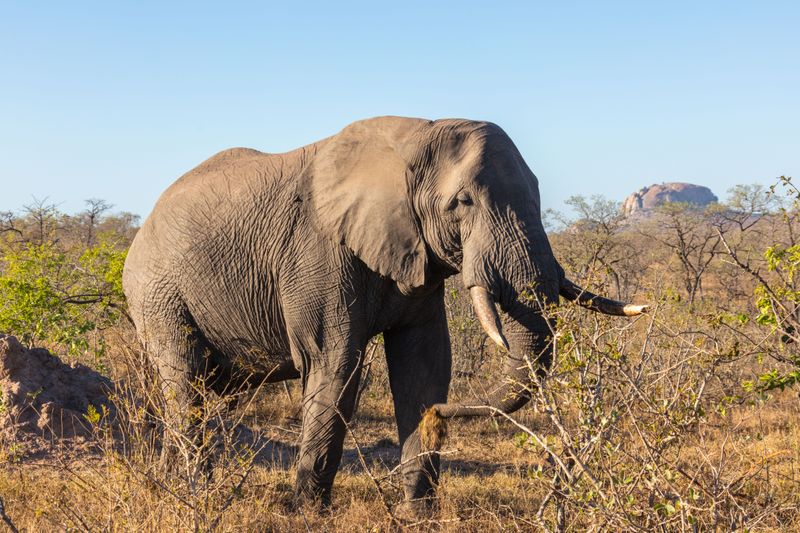
Loxodonta adaurora, an early relative of today’s African elephants, once roamed the ancient landscapes of Africa. Characterized by its prominent ears and elongated tusks, it was well adapted to its environment.
Existing during the Pliocene epoch, it inhabited areas rich in diverse plant life. Its feeding habits were similar to modern elephants, including browsing and grazing.
The fossil record of Loxodonta adaurora provides insights into the evolutionary journey that led to the elephants we know today. This species exemplifies the enduring adaptability and evolutionary success of elephants in Africa.
Anancus arvernensis
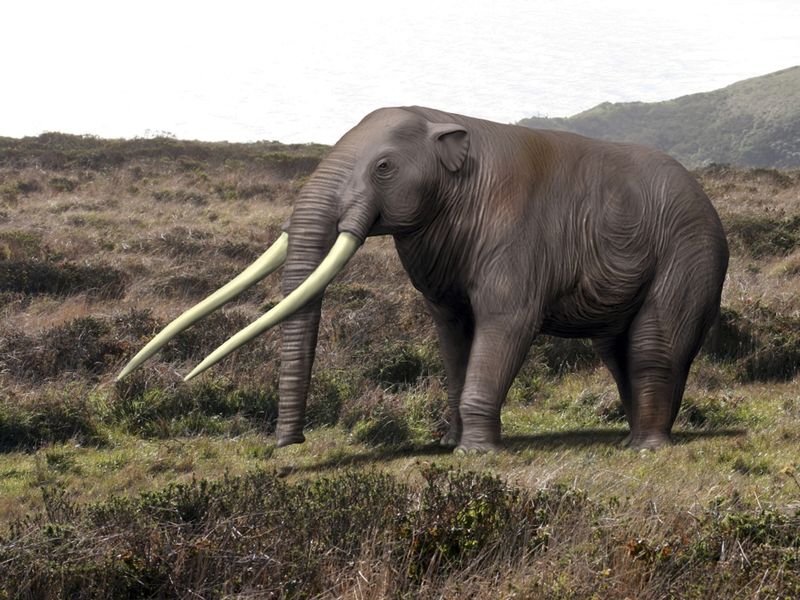
Anancus arvernensis stood out with its remarkably long, straight tusks. During the Miocene epoch, this elephant roamed the forests of Europe.
Its tusks, used for foraging and defense, were among the longest of any elephant species. The dense forests provided ample food sources, from leaves to soft foliage.
Fossils of Anancus have been uncovered in various parts of Europe, offering clues to its widespread presence. This species’ distinct features highlight the incredible diversity that existed among ancient elephants, showcasing evolutionary adaptations unique to their time.
Primelephas gomphotheroides
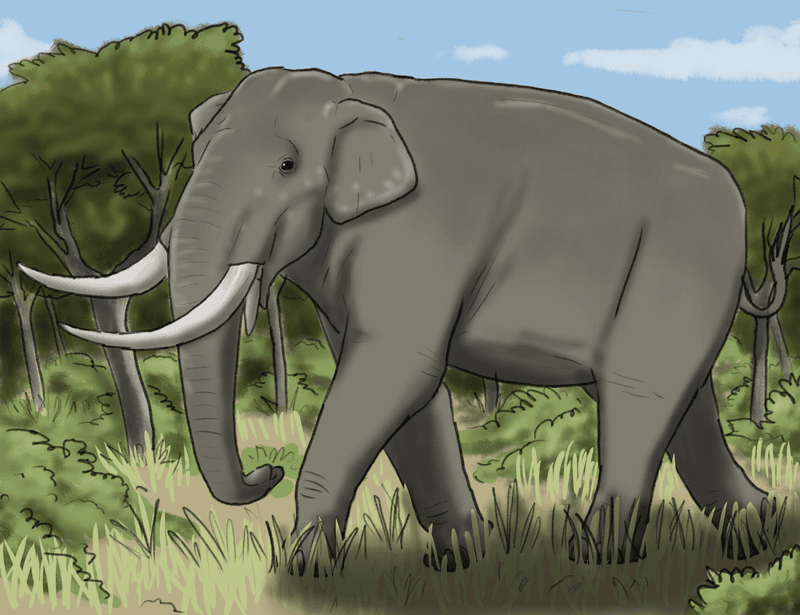
Primelephas gomphotheroides, a pivotal ancestor, bridges the gap between ancient and modern elephants. Living during the Miocene epoch, it displayed a blend of primitive and advanced characteristics.
Its fossils, found in Africa, suggest it was well adapted to varied habitats, from savannahs to forests. This species possessed a combination of both gomphothere and elephant-like features, indicating its transitional evolutionary role.
Primelephas provides a fascinating glimpse into the evolutionary processes that shaped the lineage of one of the most iconic groups of animals on the planet today.
Mammuthus meridionalis
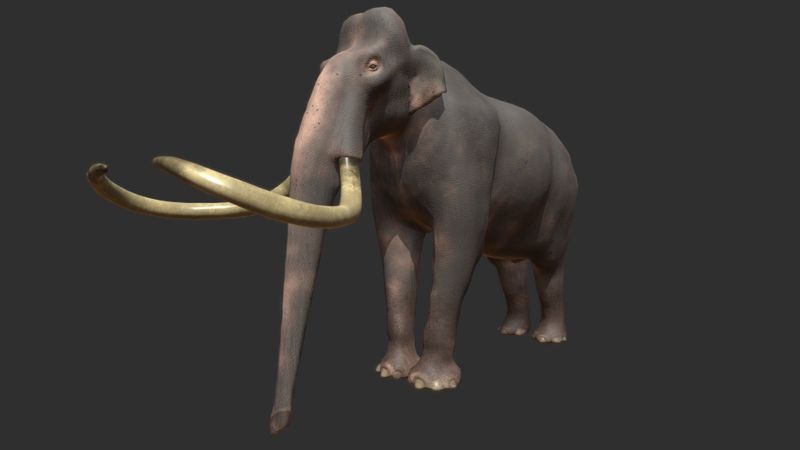
Mammuthus meridionalis, or the Southern Mammoth, inhabited the vast plains of prehistoric Europe. Known for its massive size and long, spiraled tusks, it was a striking presence.
Its thick, woolly coat provided insulation against the cooler climates of the time. This mammoth adapted to a diet of grasses, leaves, and shrubs.
Fossils suggest it might have been a precursor to the more famous woolly mammoth, indicating a lineage of adaptation to changing climates. The Southern Mammoth’s story contributes to our understanding of how ancient elephants navigated environmental shifts.
Palaeoloxodon antiquus
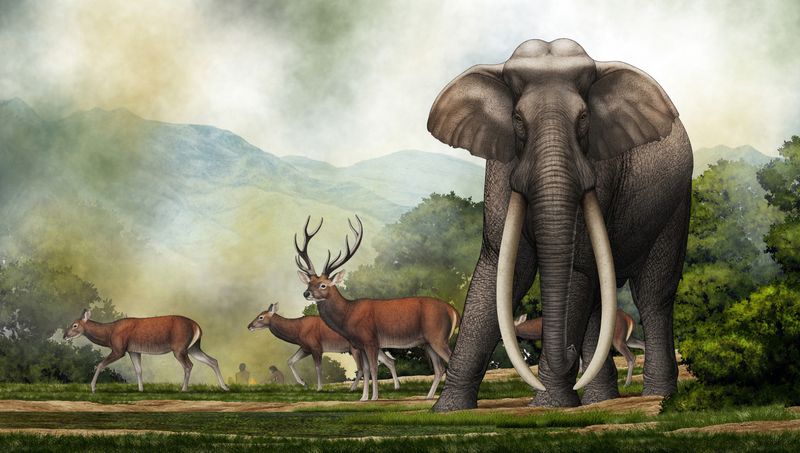
Palaeoloxodon antiquus, better known as the Straight-tusked Elephant, was a majestic giant of prehistoric Europe. Its extensive range covered much of the continent during warmer interglacial periods.
Characterized by its impressively long, straight tusks, it thrived in forested environments. These elephants were significant browsers, feeding on a variety of plant materials.
Fossilized remains have been discovered alongside those of early humans, suggesting possible interactions. Palaeoloxodon antiquus serves as a testament to the rich biodiversity of the past, offering insights into the life and environments of ancient Europe.
Stegodon ganesa
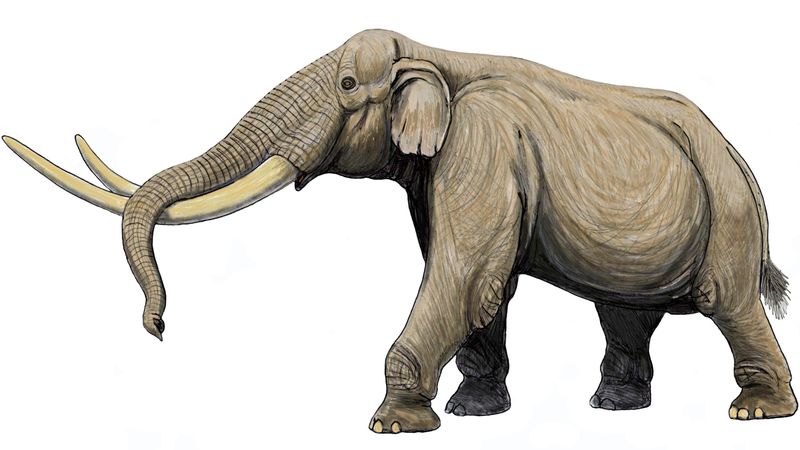
Stegodon ganesa roamed the ancient Indian subcontinent, identifiable by its ridged molars. These teeth were perfectly adapted for grinding tough vegetation.
Living during the Pleistocene epoch, it shared its habitat with other remarkable species. With its imposing tusks and large body, Stegodon ganesa was well-suited for life in dense forests.
Fossils found in various parts of India reveal its widespread distribution. This species highlights the adaptability and diversity of ancient elephants, providing a window into the ecological dynamics of prehistoric India.
Its story enriches our understanding of evolutionary biology.
Elephas maximus rubridens
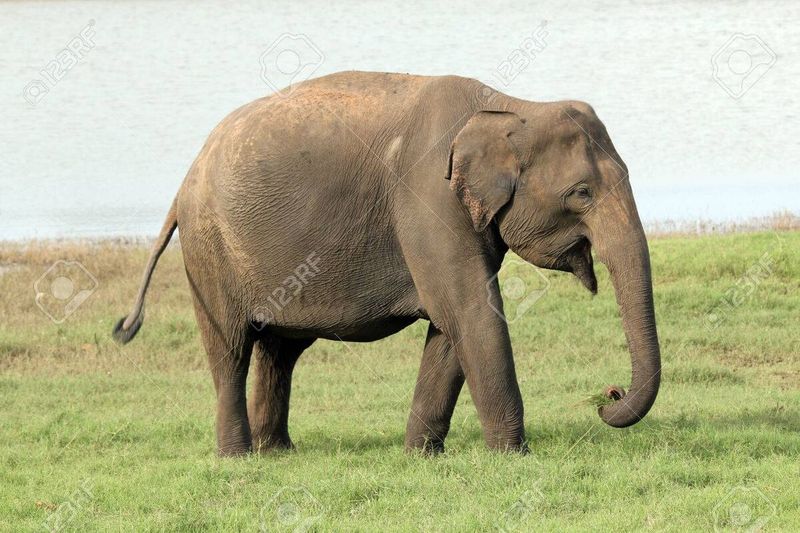
Elephas maximus rubridens was a unique subspecies of the Asian elephant, distinguished by its reddish tusks. It inhabited the lush, tropical forests of ancient Asia.
This subspecies adapted to a rich diet of diverse plant life, from fruits to bark. Its extraordinary tusks not only served practical purposes but were likely a striking visual feature.
Fossil evidence of Elephas maximus rubridens adds depth to the evolutionary history of Asian elephants, offering clues to their adaptation and survival. Its existence underscores the intricate tapestry of life that once thrived across the Asian continent.
Mammuthus primigenius
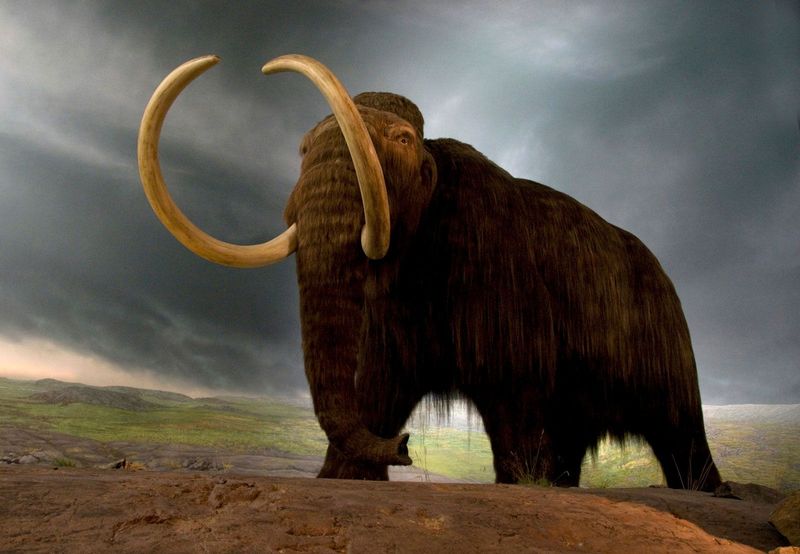
The Woolly Mammoth, Mammuthus primigenius, is perhaps the most iconic of ancient elephants. Its thick, woolly coat and massive tusks were perfectly adapted for the icy tundras it called home.
This mammoth roamed the northern parts of North America and Eurasia during the Pleistocene epoch. It fed on grasses and small shrubs, using its tusks to clear snow.
The relationship between Woolly Mammoths and early humans is well-documented, with evidence of hunting and cultural significance. This mammoth’s story continues to captivate, symbolizing the enduring connection between ancient creatures and human history.
Elephas hysudricus
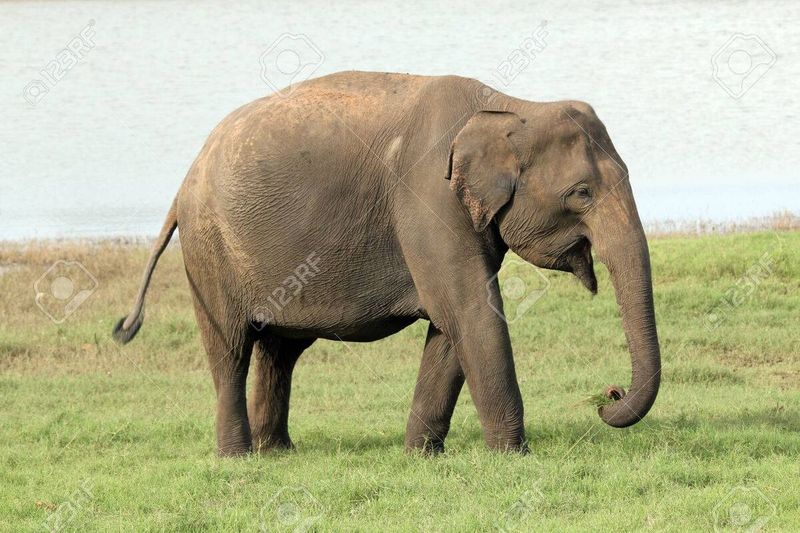
Elephas hysudricus is a key ancestor of the modern Asian elephant. It inhabited the Indian subcontinent during the Pliocene epoch.
With moderately sized tusks and a robust build, it was well-adapted to its environment. This species thrived in forested regions, feeding on a variety of vegetation.
Fossils provide insights into its behavior and ecological role. The evolutionary lineage of Elephas hysudricus demonstrates the adaptability and resilience of elephants, tracing back millions of years.
Its existence adds depth to the story of how modern elephants came to be, reflecting evolutionary success.
Palaeoloxodon mnaidriensis
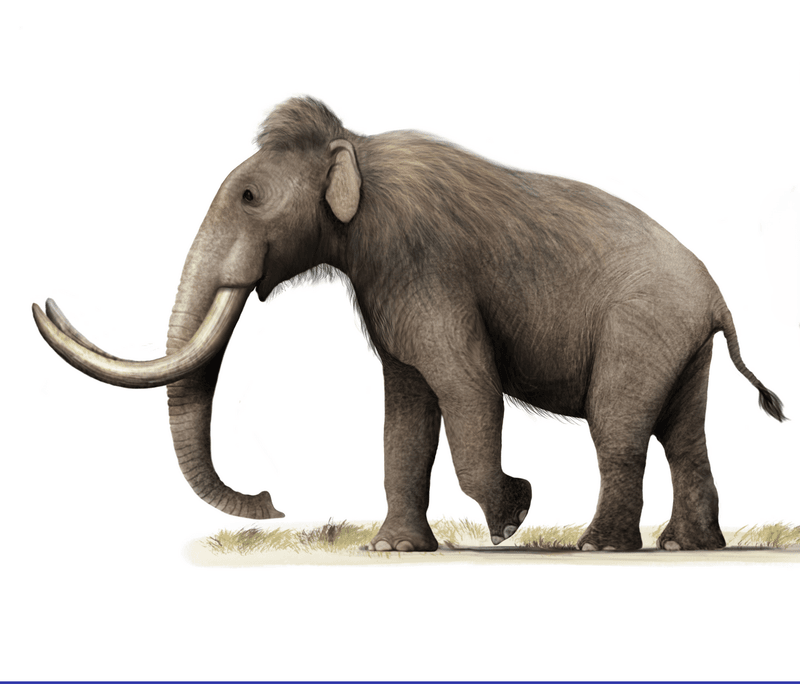
Palaeoloxodon mnaidriensis, known as the Dwarf Elephant of Sicily, offers a unique twist on elephant evolution. Adapted to island life, it was significantly smaller than its mainland counterparts.
Living during the Pleistocene epoch, this elephant was a product of insular dwarfism, a fascinating evolutionary process. Its fossils have been found on the Mediterranean islands, providing insights into how isolation influences species.
Despite its size, it retained many characteristics of larger elephants. This dwarf species highlights nature’s ability to adapt and thrive in diverse environments, transforming limitations into survival strategies.
Stegotetrabelodon syrticus
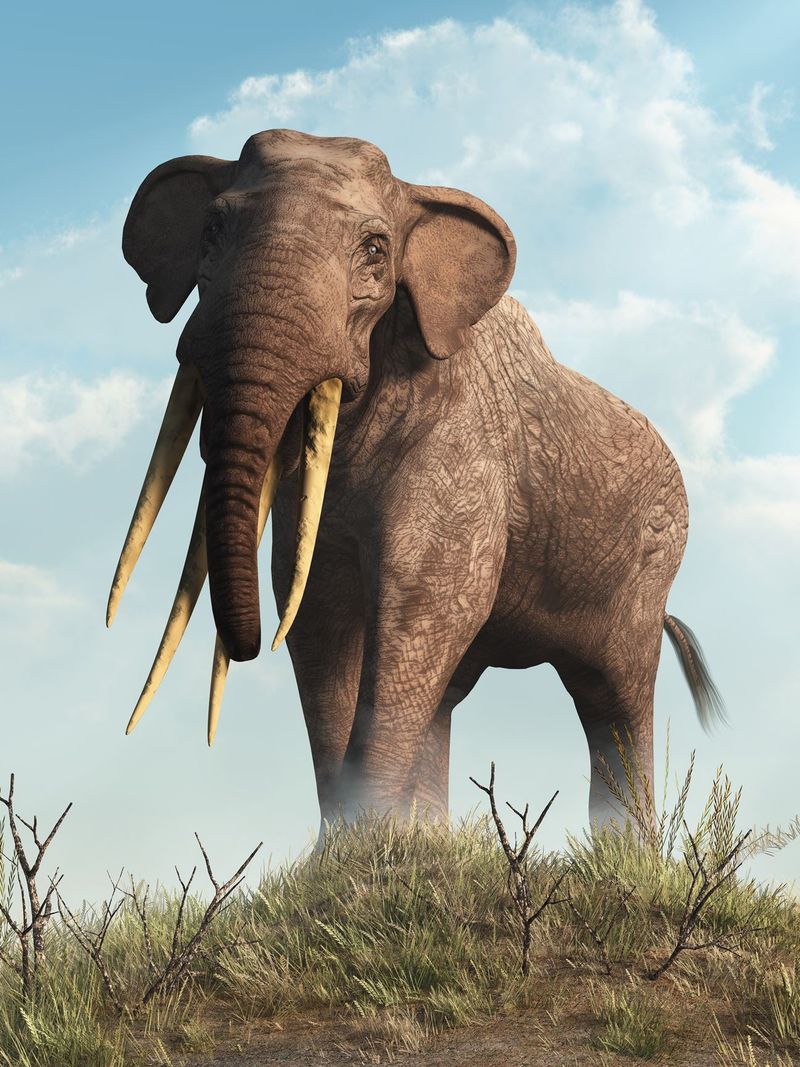
Stegotetrabelodon syrticus, a four-tusked wonder of the African savannah, captured the imagination of paleontologists with its unique dental structure. Living during the Miocene epoch, it possessed two tusks in the upper jaw and two in the lower.
This configuration likely aided in foraging and defense. Its habitat stretched across African landscapes, featuring a mix of open plains and woodlands.
The adaptive traits of Stegotetrabelodon syrticus underscore the evolutionary experiments with form and function in ancient elephants. This species stands as a testament to the rich biodiversity that once thrived on the African continent.
Mammuthus exilis
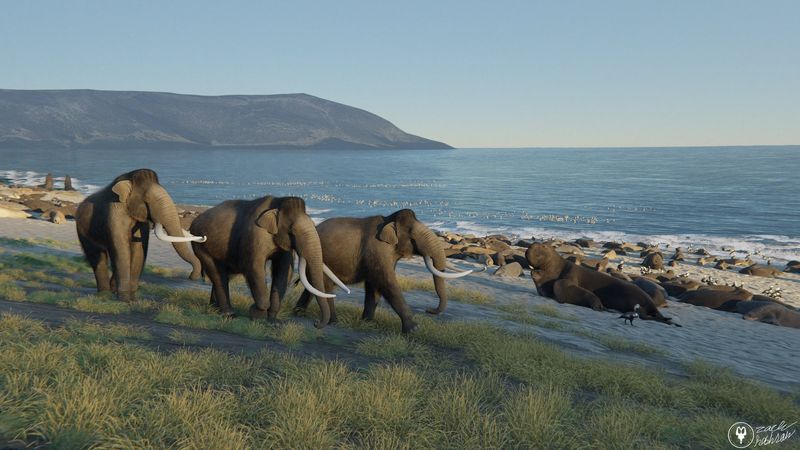
Mammuthus exilis, the Pygmy Mammoth, was an island-dwelling marvel. Inhabiting the Channel Islands off California, it was a result of insular dwarfism.
This miniature mammoth adapted to the limited resources of its island home. Despite its small stature, it retained the iconic features of mammoths, including curved tusks and a woolly coat.
Fossils found on these islands reveal much about how isolation drives evolutionary changes. The Pygmy Mammoth’s existence challenges perceptions of gigantism and adaptability, highlighting the intricate dance of evolution where size and survival often go hand in hand.
Loxodonta atlantica
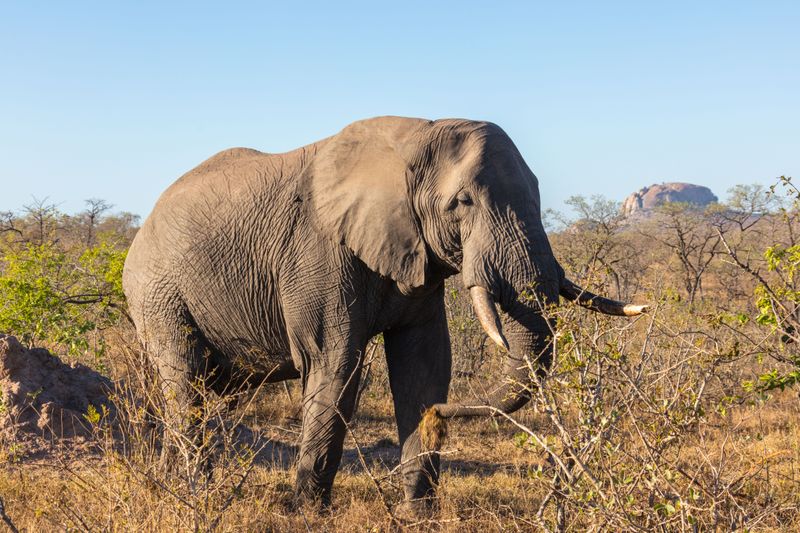
Loxodonta atlantica was a remarkable predecessor of today’s African elephants. This species roamed the vast landscapes of Africa during the Pleistocene epoch.
Distinguished by its elongated tusks and robust build, it was well-equipped for its environment. Its presence across the continent is revealed through extensive fossil records.
The survival strategies of Loxodonta atlantica offer insights into the evolutionary pressures faced by ancient elephants. Understanding this species helps shed light on the evolutionary journey of elephants, tracing the roots of the majestic creatures that continue to capture our imaginations today.
Elephas iolensis
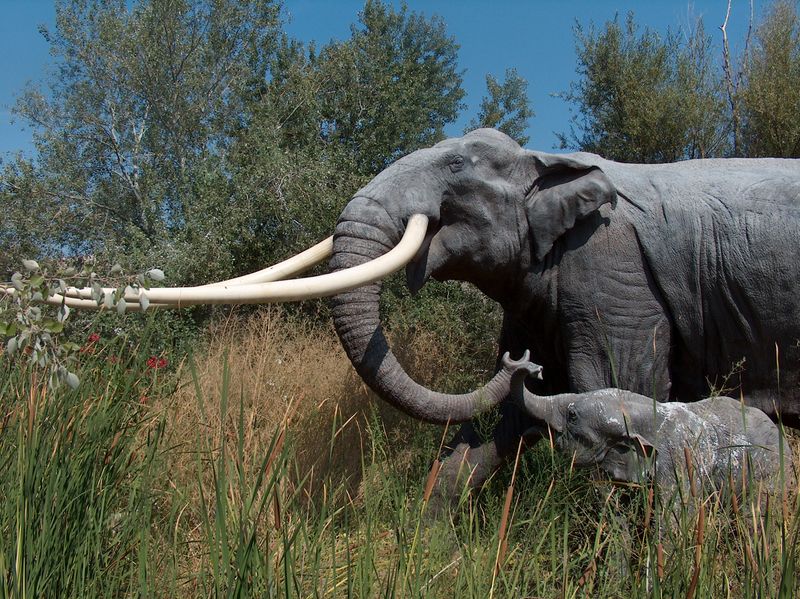
Elephas iolensis was a resilient giant of Africa’s prehistoric past. Known for its distinctive tusks and powerful build, it lived during the Pleistocene epoch.
This species adapted to a range of environments, from forests to grasslands, highlighting its versatility. Fossil evidence suggests its presence alongside early human ancestors, hinting at interactions that shaped both species.
The story of Elephas iolensis enriches our understanding of the complex relationships between ancient elephants and their environments. This species exemplifies the adaptability and strength that has characterized the lineage of elephants through time.
Stegodon florensis
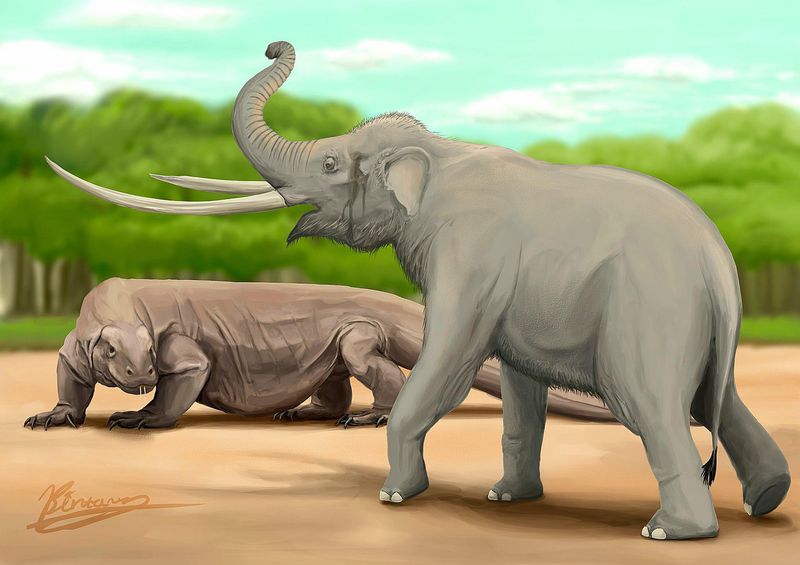
Stegodon florensis is a remarkable species that once roamed the lush landscapes of ancient Indonesia. These creatures were known for their compact size compared to other ancient elephants, making them an intriguing subject of study.
Their tusks were distinctly long and straight, a feature that set them apart in the wild.
Living in dense forests, Stegodon florensis had to adapt to a life filled with rich vegetation and formidable predators. Their ability to thrive in such environments speaks volumes about their resilience and adaptability.
Despite their smaller stature, they played a crucial role in their ecosystem, promoting biodiversity and aiding in seed dispersal. Their existence offers valuable insights into the evolutionary history of elephants.

